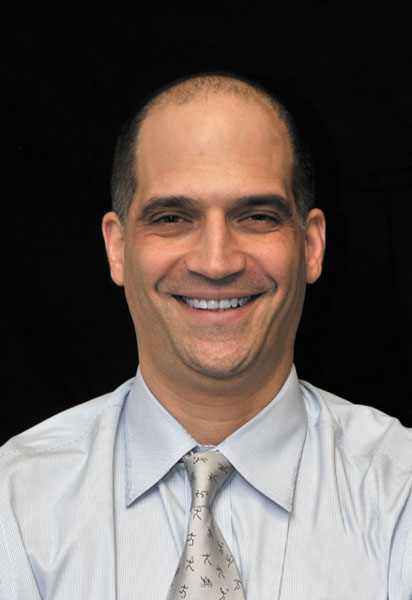Microsurgery — and harvesting vegetables — keep this doctor busy
Published August 15, 2012
Microsurgery certainly can be challenging — but Dr. Martin Boyer contends that tending to the organic garden in his backyard in 107-degree weather also is difficult.
“I’ve managed to keep it watered, keep it going,” said Boyer, 48. “I have potatoes, zucchini, parsnips, beets, leeks, Jerusalem artichokes, arugula and fennel. I love my vegetables.”
Boyer, a member of Traditional Congregation of Creve Coeur, is a professor of orthopedic surgery at Washington University and co-director of the new Peterson Hand Center at Washington University Orthopedics, which just opened in July, with locations in Chesterfield and the Central West End.
The Center focuses on diagnosis, treatment and research of hand, wrist, and upper extremity injuries and conditions. With six surgeons that specialize in hand and wrist surgery, the Center is said to be the largest group of hand surgeons in the region. “We offer one-stop shopping for hand problems and state-of-the-art care,” Boyer said.
In addition to Boyer, Jewish doctors on staff at the Center include Dr. Charles Goldfarb, co-director of the Center and associate professor of orthopedic surgery, and Dr. Richard Gelberman, a professor and also chairman of the department of orthopedic surgery at Washington University.
Boyer made time recently to talk about his work.
You lead the Center’s microsurgery team and oversee both the educational program and the hand fellowship program. What sort of injuries do you see that require microsurgery?
I see people injured in traumas, people with soft tissue wounds that will not heal without the provision of new tissue or tissue taken from somewhere else to fill a gap. I take tissue from skin or muscle or bone, along with the blood vessels, and transplant it. Basically, that is the highest level of wound care in trauma patients that can be offered.
Is it common for a hand surgeon to do this surgery?
Hand surgeons do some of this work, but it’s pretty infrequent that orthopedically trained people do it. It is interest of mine. I really like doing it because it provides a service to patients and is a benefit to the group. Also, I’ve done research on microsurgical transplantation.
What was the nature of the research?
We did 20 years of experiments on animal models that detailed how growing bone, or immature bone, would respond to transplantation into different places in the body.
What was the outcome?
We learned that fundamentally the growth plate continues to grow following transplantation into new locations — and not only that, but it grows at what at first blush might seem to be the expected rate.
Has this been done on humans yet?
No. The issue of storage of transplantation is still being worked out. But in 2004 or 2005, our surgeons were the first in the Midwest to do a transplant of growing bone taken from around the knee to reconstruct a shoulder.
What are the most common hand injuries that you see?
Broken wrists. Wrist sprains from bicycle accidents or sporting accidents. Injuries to tendons from knife accidents in the kitchen. Injuries from lawn mowers and hedge trimmers where people have cut off fingers. Industrial injuries where fingers get cut off. And we always see people with firecracker injuries on July 4. This year we saw three people with exploded hands.
Every woman of a certain age has been told not to break a fall by putting out her hands. What do you think of that?
I would rather someone breaks a wrist than a hip — I can tell you that.
You were born in Montreal and brought up in Toronto, where you attended medical school. You completed fellowships in Toronto and at the Indiana Hand Center in Indianapolis before coming to Washington University in 1997. What led you to become a doctor?
I always had an aptitude for medicine, and orthopedic surgery was an easy choice. The immediacy of everything you do is very appealing.
Gardening, on the other hand, requires patience. How long have you had a garden?
For the last five or six years. We had a nice backyard and were not doing anything with it, so I borrowed a neighbor’s tiller, tilled the earth and started to play.















